5 Experts Reveal the Must-Have LMS Features for Online Training of Staff
What really matters when choosing a learning management system (LMS)? The answer to this question depends on your goals for your LMS and employee training program. But there are some must-have LMS features that form the foundation of a good LMS. These are the features you should pay keen attention to when making your purchase decision.
When upgrading your staff using online training, you want a learning management system that provides all the features you need to make training successful. We spoke with five learning and development experts in the Caribbean to get their feedback on the top features of an LMS. These experts have worked with various learning management systems and have a detailed perspective of the features that matter most.
This article highlights direct quotes from these experts. It also provides a glimpse of what each of these LMS features looks like.
1. Assigning Courses Based on An Employee’s Career Path
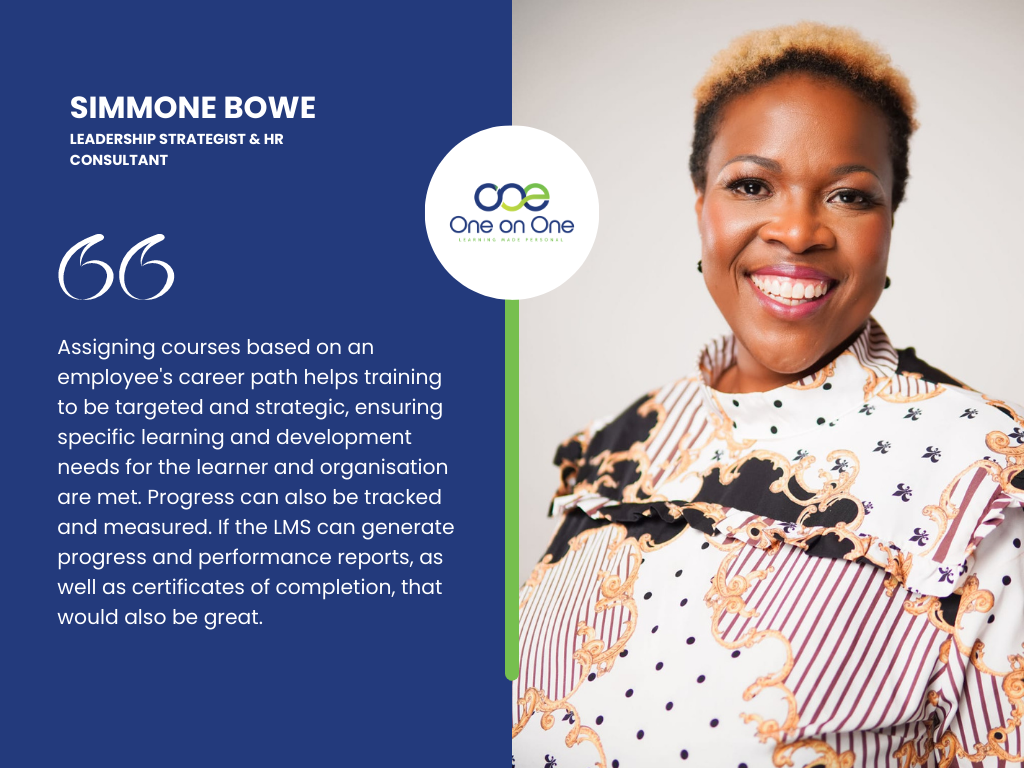
“Assigning courses based on an employee’s career path helps training be targeted and strategic, ensuring specific learning and development needs for learners and organisations are met. Progress can also be tracked and measured. If the LMS can generate progress and performance reports, as well as certificates of completion, that would also be great.”
~ Simmone Bowe, Leadership Strategist and HR Consultant
According to a LinkedIn Learning report, 94% of employees are more likely to stay at organisations longer if those organisations invested in their careers. Also, 15% of employees are more engaged at work if they have professional development opportunities. That’s why career path planning for employees is important and should be supported by a learning management system.
It’s important to remember when career path planning for employees that your LMS should:
Help you identify your employee’s skill gaps
Assign courses based on the career paths your employees choose
Allow you to keep track on how each employee is progressing towards gaining key career-specific skills
Reward employees based on their level of engagement with the LMS, course completion rates, and certificates acquired
Provide a seamless employee onboarding experience that supports career path planning
LMS in Action: Choosing Career Paths, Generating Reports, Producing Certificates
One on One included career pathing in an LMS we created for a client. This client wanted a platform that offered upskilling opportunities to Jamaican youth between 18 and 20 years old. Users used the LMS to choose the career paths that appealed to them as shown in the image below.
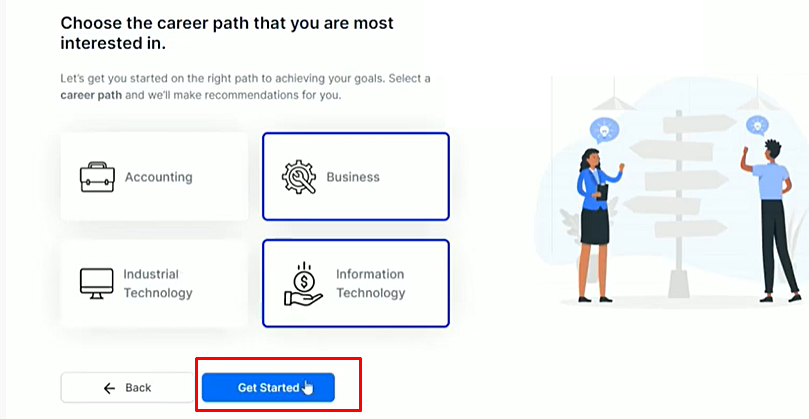
Administrators were able to pull LMS reports for individual users and user groups.
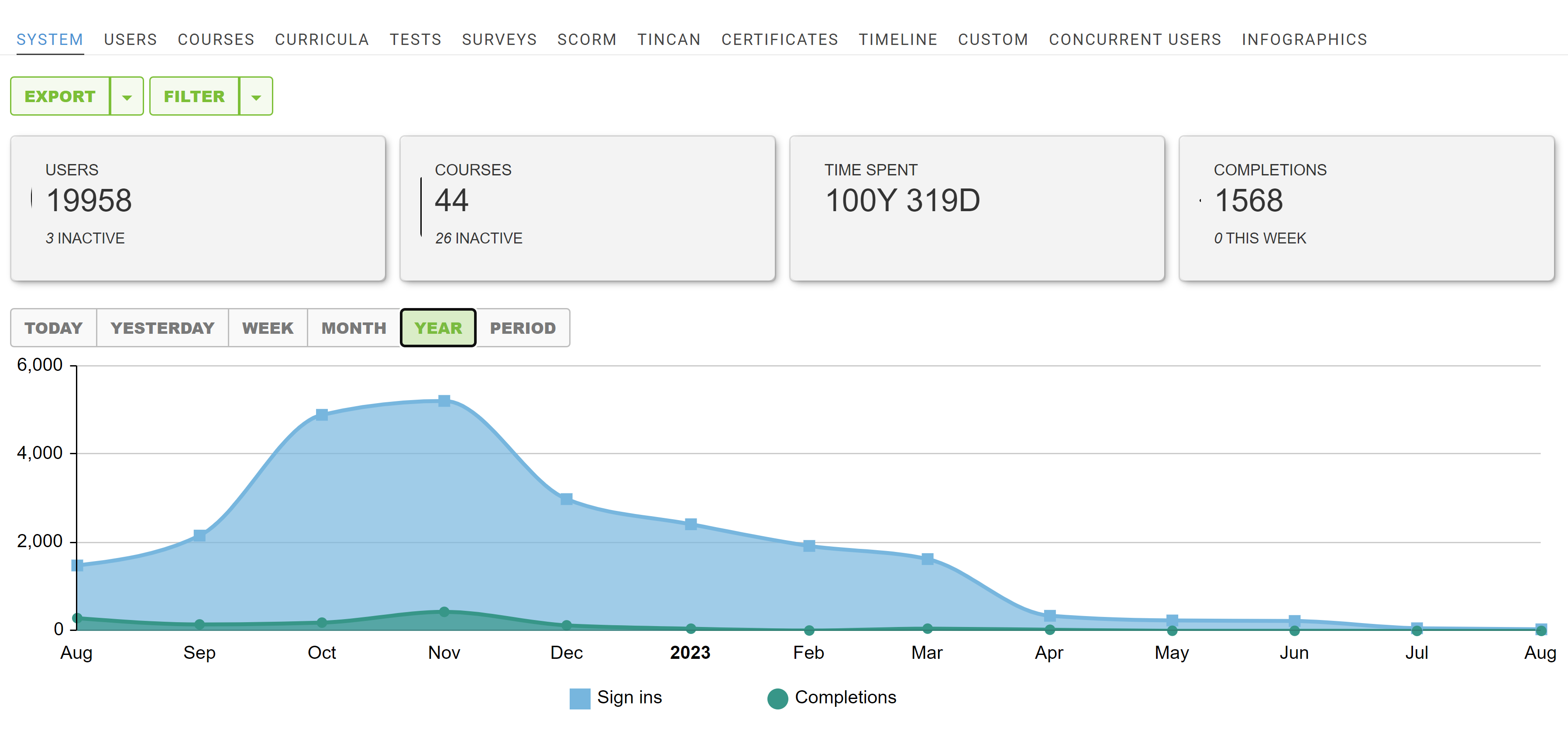
Certificates were also instantly issued whenever a student completed all the courses in a career path.
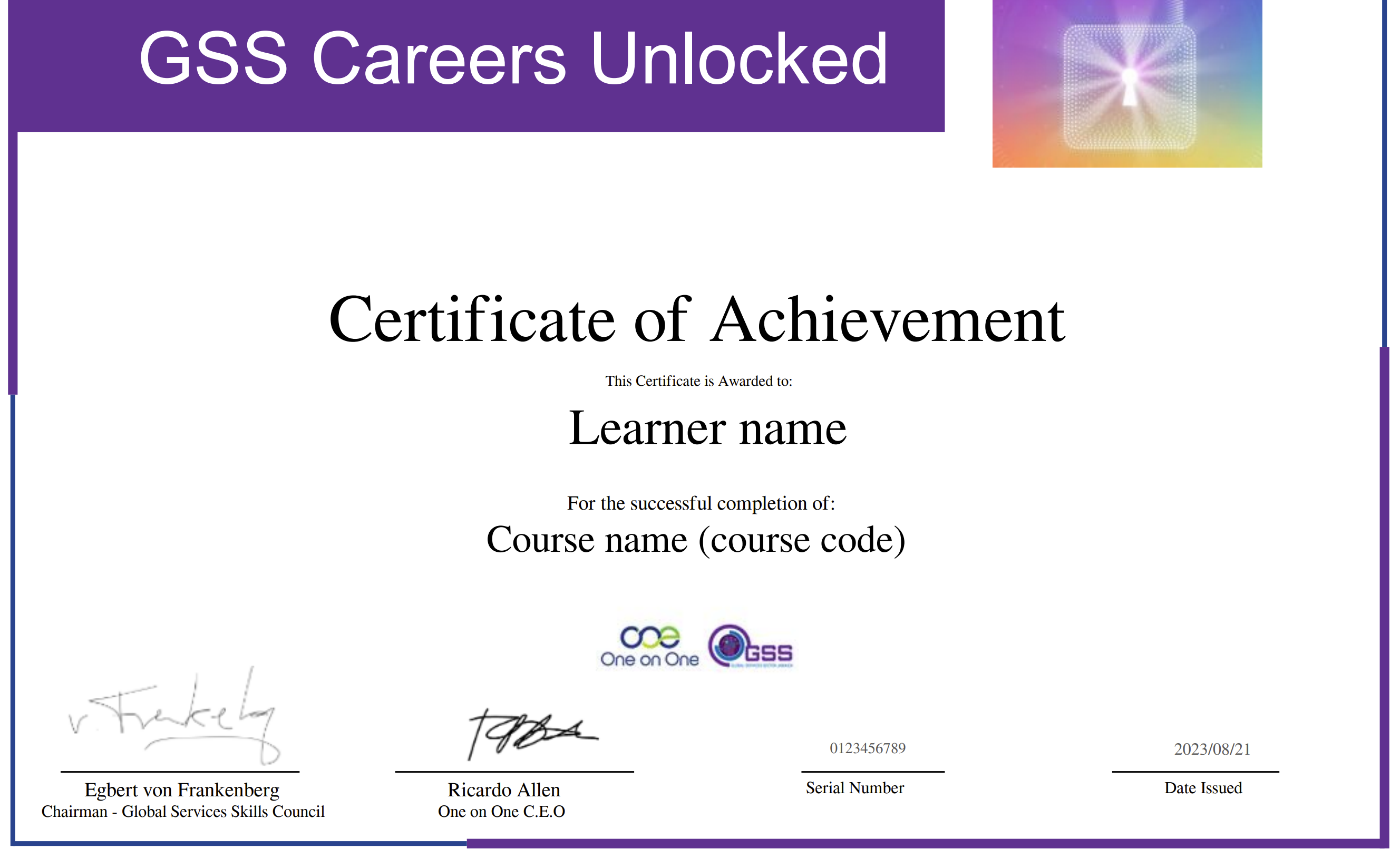
2. Push Notifications and Gamification
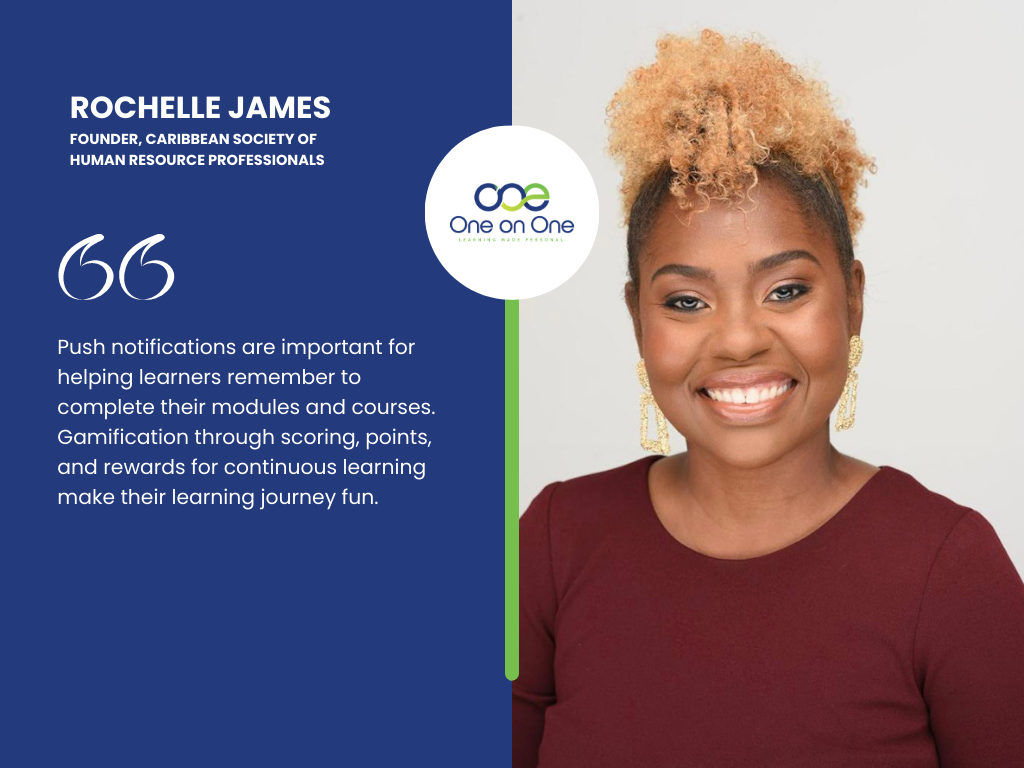
“Push notifications are important for helping learners remember to complete their modules and courses. Gamification through scoring, points, and rewards for continuous learning make their learning journey fun.”
~ Rochelle James, Founder of the Caribbean Society for Human Resource Professionals
One of the biggest challenges HR leaders face is increasing LMS uptake among staff. Fundamentally, there are two LMS features that support initiatives to increase LMS uptake. First, you want an LMS that will send notifications to remind users to complete their courses. Second, your LMS should have gamification features that reward your employees for actions they take on the system.
With those two fundamental LMS features in place, you and your team can execute internal learning and development campaigns that create buzz and excitement about learning. Partnering with employees and C-Suite execs who act as advocates for the program is particularly helpful to getting more people excited about being part of the program.
LMS in Action: Notifications and Gamification
One on One’s LMS allows you to create notification banners that remind users to complete courses. An example is shown in the image below.
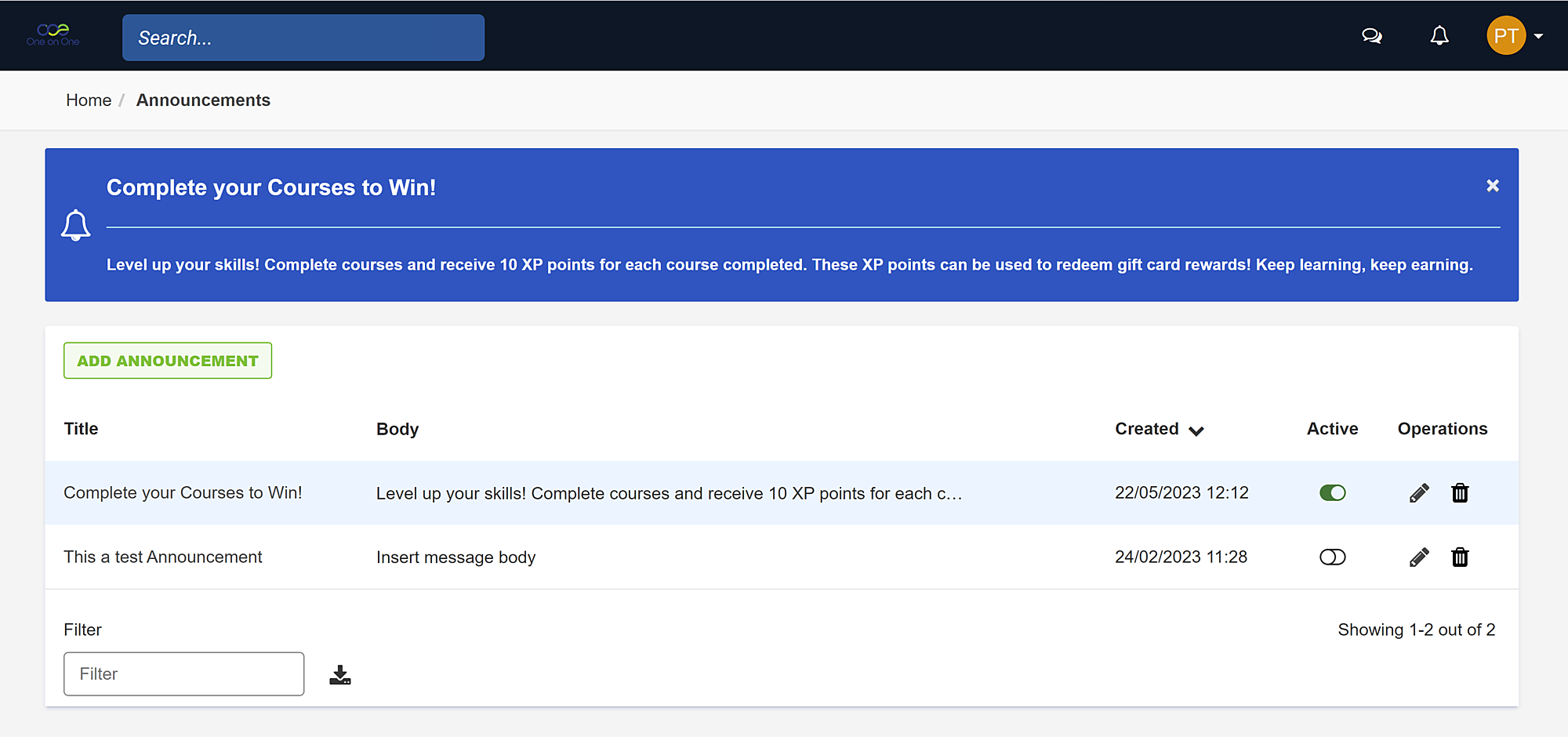
There are also gamification features that allow you to assign points, badges, and levels. You can use these to create a leaderboard within One on One’s LMS.
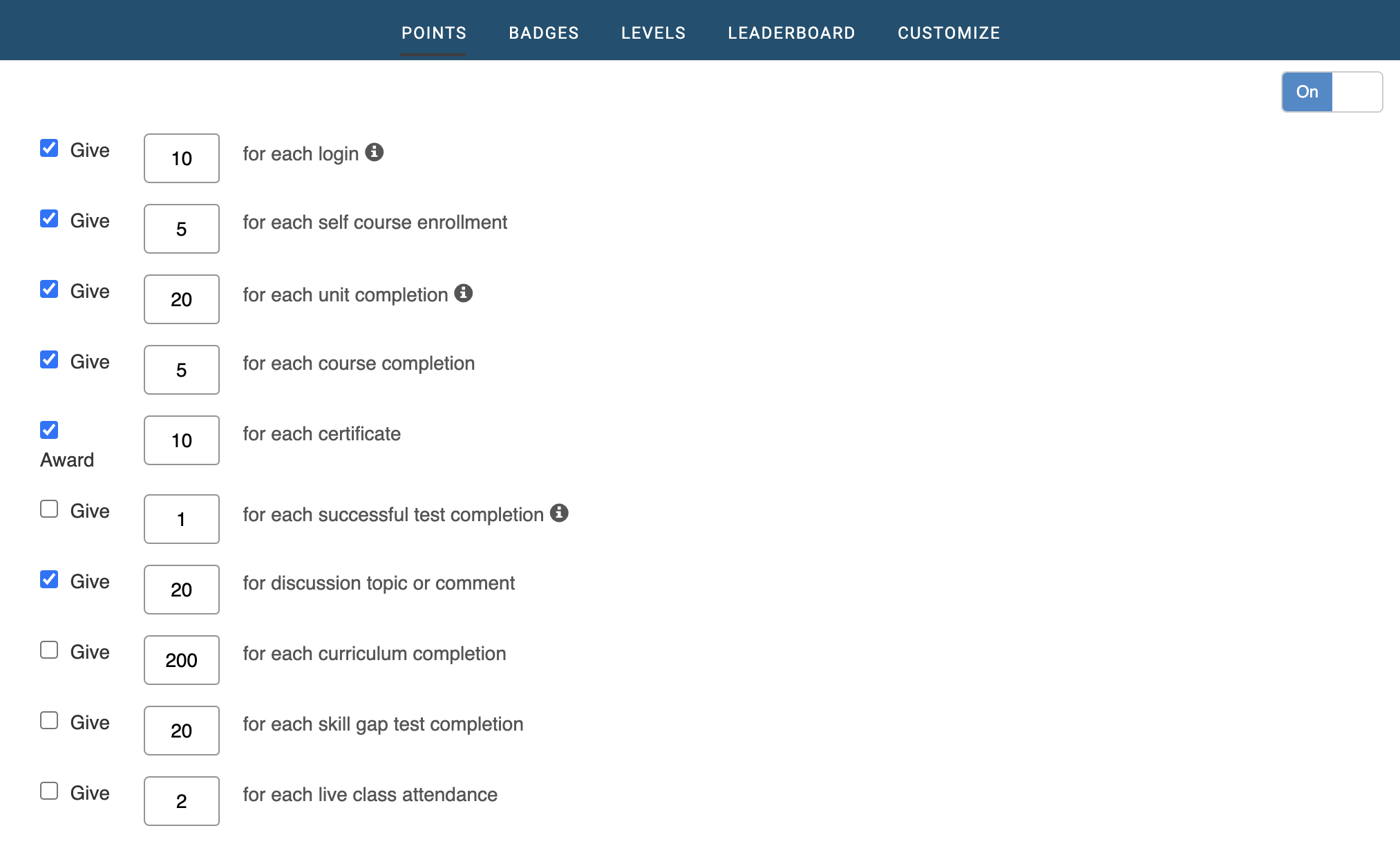
3. Simple, User-Friendly System
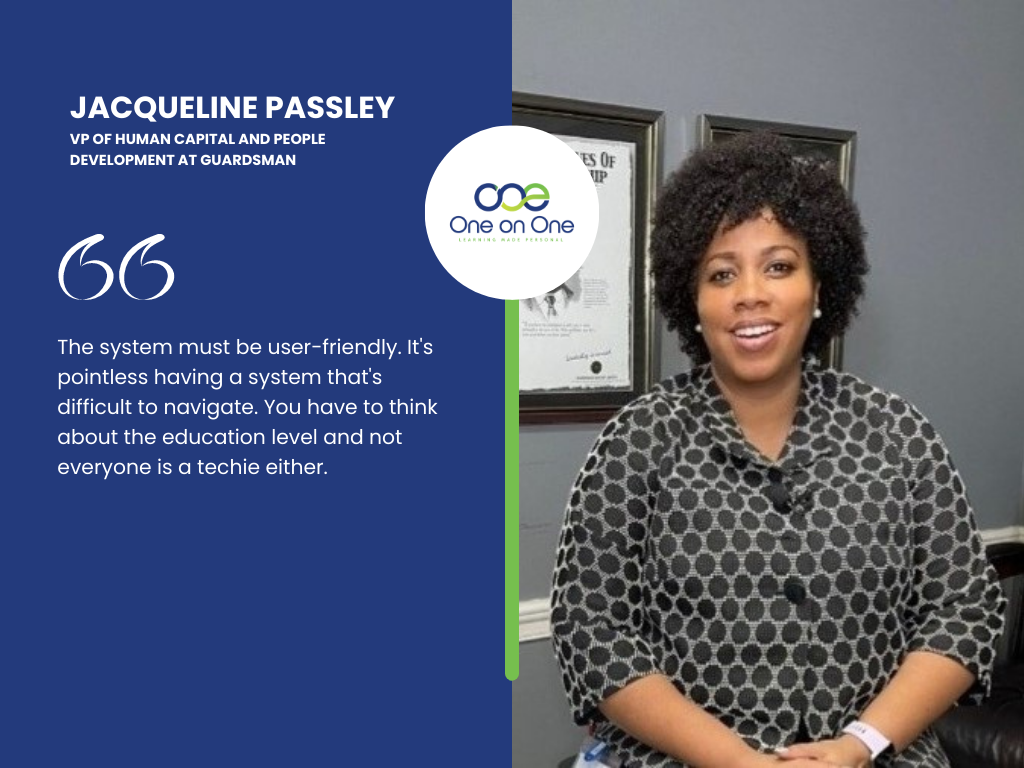
“The system must be user-friendly. It’s pointless having a system that’s difficult to navigate. You have to think about the education level and not everyone is a techie either.”
~Jacqueline Passley, VP of Human Capital and People Development at Guardsman
“User-friendly” can be a very subjective term. Let’s break down what a user-friendly LMS looks like. A user-friendly LMS has these features:
Seamless user experience from beginning to end
Clutter-free layout
Clear navigation
Adaptation to devices of all sizes (more about this below)
Look out for those four things when determining whether an LMS provides a user-friendly experience.
LMS in Action: A User-Friendly Experience
One on One’s LMS makes it easy for students to access and resume courses, get support, see their points-standing, get updates through notifications, participate in discussion forums, and much more. An example of what the student portal of our LMS looks like is shown below.
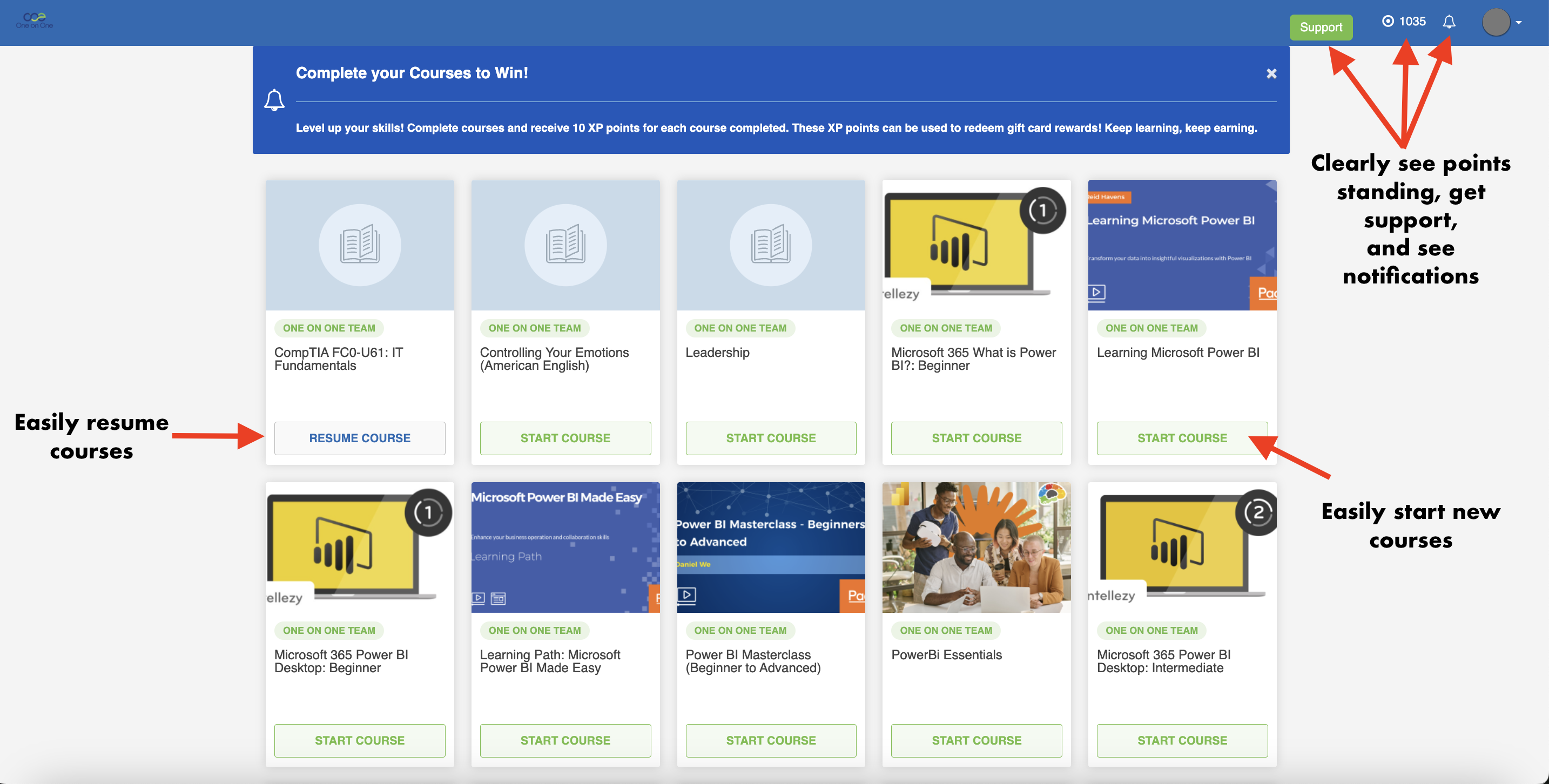
4. Mobile Accessible Training
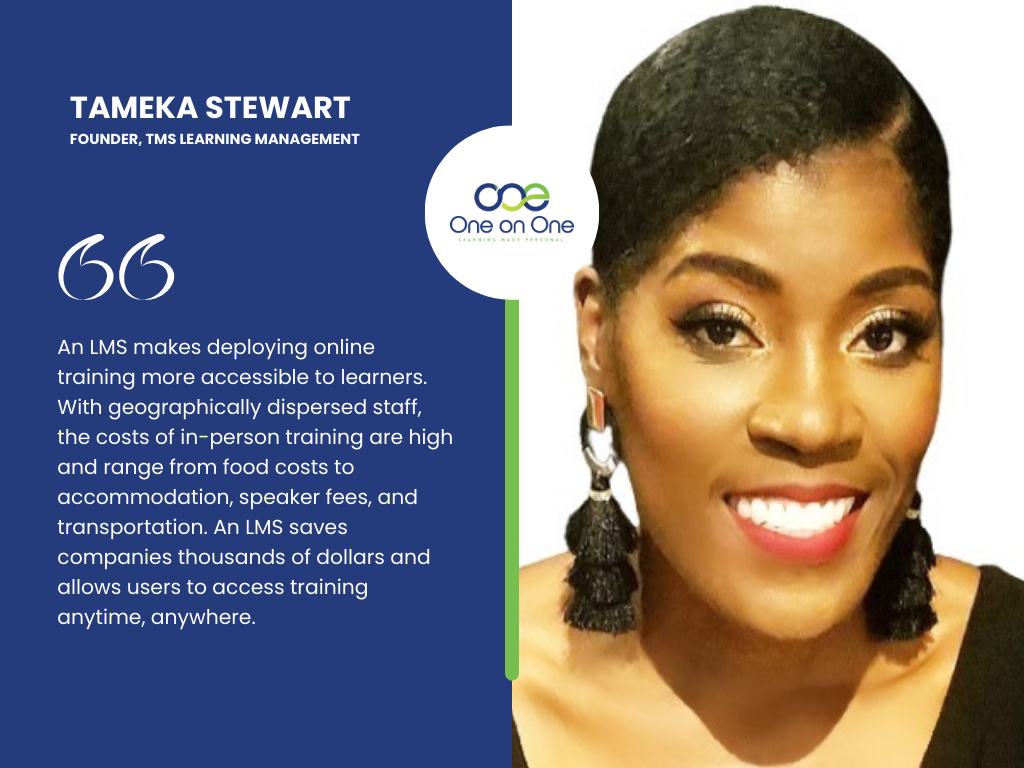
“An LMS makes deploying online training more accessible to learners. With geographically dispersed staff, the costs of in-person training are high and range from food costs to accommodation, speaker fees, and transportation. An LMS saves companies thousands of dollars and allows users to access training anytime, anywhere.”
~ Tameka Stewart, Learning and Development Consultant
As Tameka mentions, online training cuts costs. One of the ways online learning makes cost-saving possible is through providing a holistic mobile learning experience. Research done by Lynda.com revealed that 75% of learners identified convenience, time savings, and training with no distractions as the key benefits of mobile learning. An LMS should provide a mobile-friendly user experience.
LMS in Action: Accessible Anytime, Anywhere, and On Any Device
One on One’s LMS is accessible on mobile devices of all sizes. All your team needs is either mobile data or a stable internet connection. The image below shows a mock-up of what the mobile login looks like from a phone.
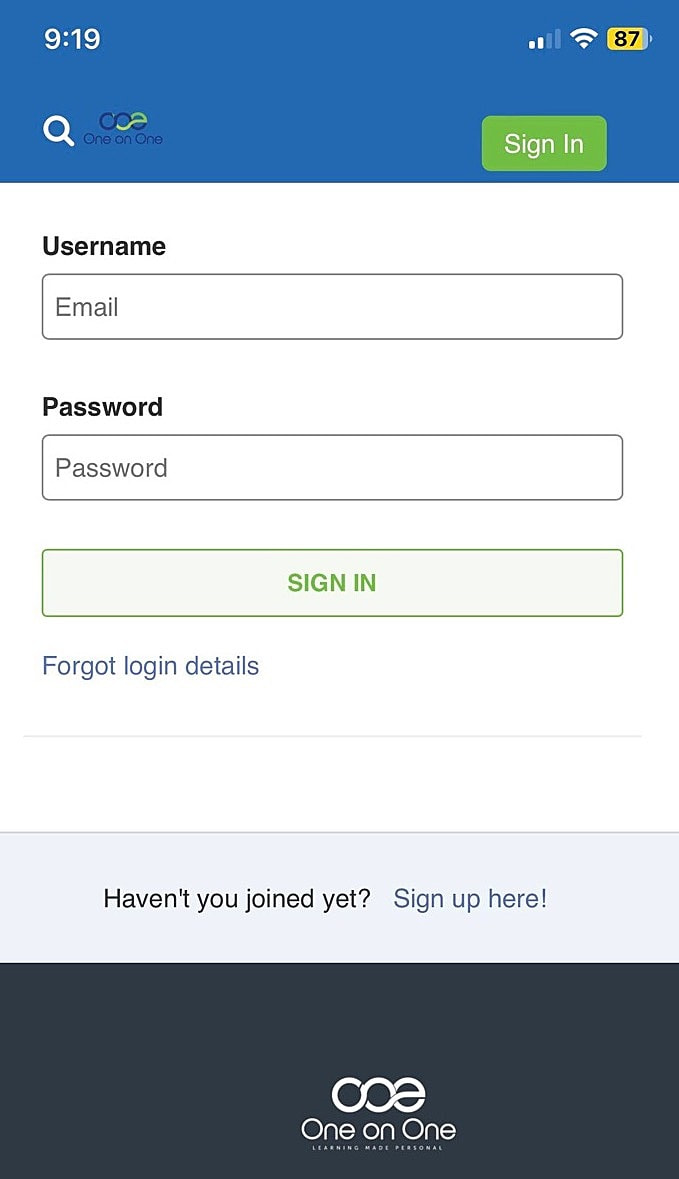
But accessibility doesn’t stop at mobile compatibility. People with disabilities should also be able to easily use your LMS. This means that your LMS should be WCAG-compliant.
5. Web Content Accessibility Guidelines (WCAG) Compliance
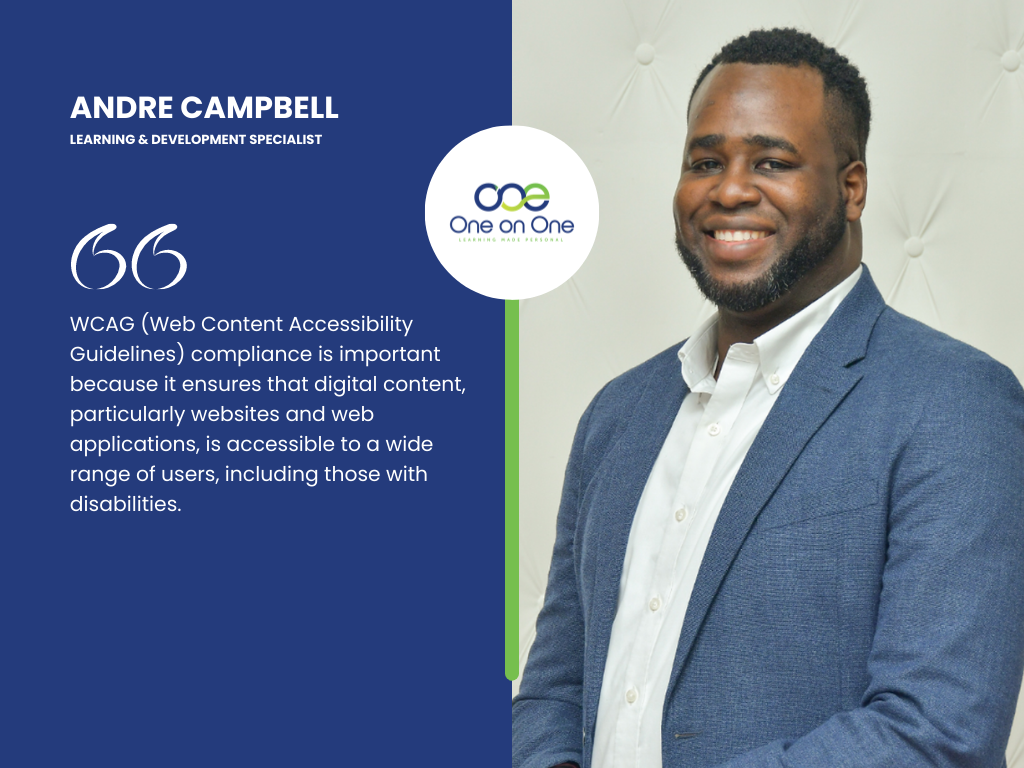
“WCAG (Web Content Accessibility Guidelines) compliance is important because it ensures that digital content, particularly websites and web applications, is accessible to a wide range of users, including those with disabilities.”
~ Andre Campbell, Learning and Development Specialist
Andre also explained ten reasons WCAG matters.
WCAG (Web Content Accessibility Guidelines) compliance is important because it ensures that digital content, particularly websites and web applications, is accessible to a wide range of users, including those with disabilities. Here’s why WCAG compliance matters:
Inclusion and Equal Access: WCAG compliance is rooted in the principles of inclusivity and equal access. It ensures that people with disabilities can access and interact with digital content on an equal basis with those without disabilities. This is essential for promoting a more equitable and inclusive digital environment.
Legal and Regulatory Compliance: Many countries and regions have legal requirements or regulations that mandate digital accessibility. Organizations that fail to meet these requirements could face legal consequences, including fines and lawsuits.
Reaching a Larger Audience: By making your digital content WCAG compliant, you can reach a larger audience, including people with disabilities who might otherwise be excluded from accessing your content. This can lead to increased engagement, user satisfaction, and potential business growth.
Improving User Experience: Many accessibility features designed to meet WCAG guidelines also enhance the user experience for all users, not just those with disabilities. For example, clear navigation and readable text benefit everyone.
Social Responsibility: Promoting digital accessibility is a matter of social responsibility. It shows that your organization values diversity, inclusion, and the needs of all users.
Supporting Assistive Technologies: Many people with disabilities rely on assistive technologies such as screen readers, voice recognition software, and alternative input devices. WCAG compliance ensures that these technologies can effectively interpret and interact with your content.
Future-Proofing: Building accessibility into your digital content from the start ensures that it remains usable as technology evolves. This can save time and resources in the long run by avoiding the need for extensive retrofits.
Positive Brand Image: Demonstrating a commitment to accessibility can enhance your organization’s brand image. It signals that you care about your users and are dedicated to providing a high-quality experience for everyone.
Educational Institutions: Educational institutions, both traditional and online, have a responsibility to provide accessible content to students with disabilities to ensure they can fully participate in learning activities.
Government and Public Sector: Government agencies and public sector organizations often have legal obligations to ensure that their digital services are accessible to all citizens, regardless of their abilities.
In summary, WCAG compliance is crucial for promoting accessibility, inclusion, legal compliance, and a positive user experience in the digital realm. It’s an essential step toward creating a more accessible and equitable online environment for everyone.
LMS In Action: WCAG Compliance
One on One’s development team uses WCAG-2 guidelines and we maintain compliance in three ways.
The LMS Software: Our LMS software meets WCAG-2 guidelines as best as possible. For example, we offer alternatives for all images (alt tags), we don’t use iframes, Java, or Flash. We also don’t use strictly colours to convey information. We also offer consistent navigation to make the system predictable.
The Browser: Any user who accesses our LMS through a modern web browser experiences the WCAG-2 benefits that browser provides. For example, a browser offers tools to navigate a page with the keyboard, ways to increase or decrease the font size, and tools that help users enter data into forms.
The Content: Many of the accessibility requirements reside on the content. As an example, the content must be offered in alternative ways to cover different disabilities and it also needs to be adaptable. Our team provides content in multiple formats to meet the needs of all learners.
Online Training for Staff with a Strong LMS in Jamaica
A learning management system is a worthwhile investment for your employee training program. You will make your training program successful by using an LMS that creates the best possible experience for your staff and program administrators. With the core features in place, you can use integrations to customise the LMS to suit your needs.
One on One offers a learning management system, library of 30,000+ ready-made courses, and content development services for businesses of all sizes. Book a demo with us to learn more.

